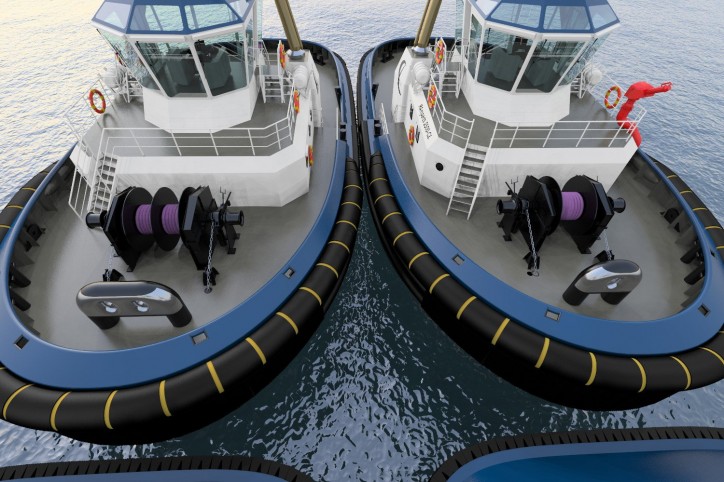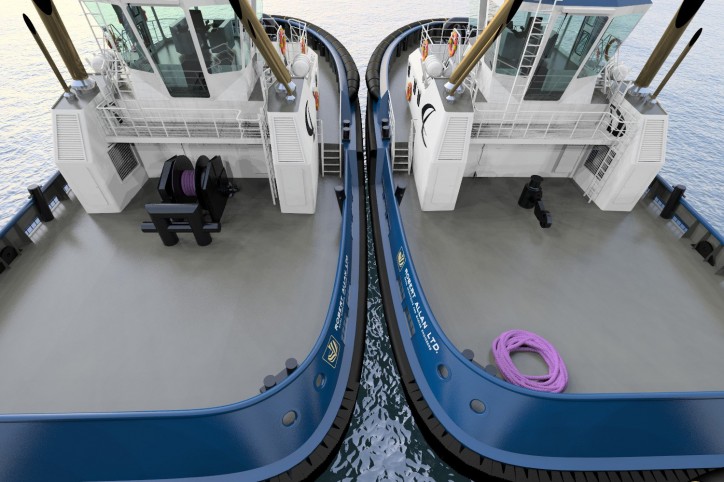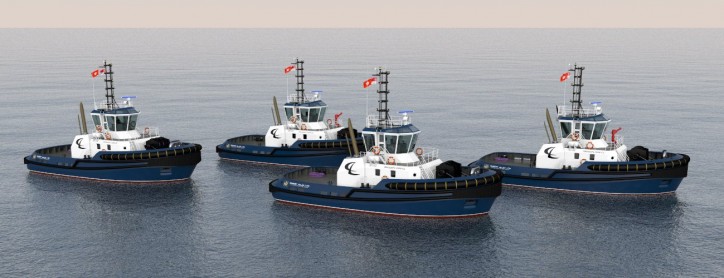Cheoy Lee Shipyards and Robert Allan Ltd. announced yesterday an exclusive new tug series being built by Cheoy Lee. The RAmparts 2500-CL is an evolution of Robert Allan Ltd.’s highly successful RAmparts 2500-W design, updated for Cheoy Lee’s marketing objectives. The new design is very flexible and allows for a multitude of options according to the client’s requirements. The first vessel is scheduled for delivery in early 2018.

The hull and skeg of the RAmparts 2500-CL have evolved to provide improved manoeuvring and side stepping capabilities. As with all RAmparts series vessels, the hull has been optimized for maximum thrust and bollard pull, while maintaining excellent maneuvering and sea-keeping. A half-raised forecastle deck helps to keep the working deck safe and dry, while a gently rounded deck line in plan to ensure that the tug can safely and easily come alongside and remove itself from an attended ship at speed. Most importantly, the characteristic double chined stern unique to all Robert Allan Ltd. designs ensures that the tug can run astern at high speeds and maintain good control and directional stability.

The tug can be adapted to a suit a wide variety of owner requirements including:
- Propulsion packages to achieve 50 tonne, 60 tonne, and 70 tonne bollard pull
- Single or split drum forward winch
- Optional aft winch
- Optional Fi-Fi 1 systems (Fi-Fi 1/2 is standard)
- A variety of MLC compliant accommodation layouts
Particulars of the RAmparts 2500-CL are as follows:
- Length overall: 25.40 m
- Beam, moulded: 11.80 m
- Depth, least moulded: 4.60 m
- Maximum draft (overall): 4.63-5.10 m
The rule length has been kept less than the 24 m loadline and tonnage convention limits while optimizing for maximum hull volume, resulting in improved accommodation spaces and crew comfort.

The vessel has been designed to LR Class requirements with the following notation:
LR -- 100A1 TUG -- LMC -- UMS, IWS
Tank Capacities at 98% are:
- Fuel oil: 91 m³
- Potable water: 11 m³
- Optional foam: 5 m³
- Optional dispersant: 5 m³
Source: Robert Allan